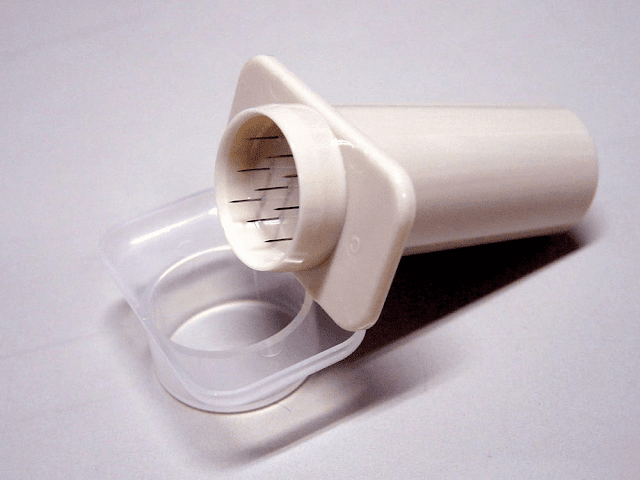Bladder Cancer Treatments BCG
Bladder cancer treatments BCG - In a bladder rinse, the doctor injects medicines into the bladder. Another word for this is bladder setting. The doctor first introduces a bladder catheter: a tube inserted into the bladder through the bladder tube. Throughout the catheter, all urine runs out of the bladder. Then the doctor brings the medicine into the bladder. The drug is dissolved in a liquid. If the medicine has been inserted, the catheter may be turned off again.
The treatment takes place at the outpatient clinic.
The advice is not to drink too much on the day of the rinse so that the solution is not diluted too much. Then the medicine works better.
After the blow rinse, just polish the liquid. This will happen within 1 to 2 hours. The possible residues of medicines can be harmful to others. Therefore, you will receive a number of opinions in the hospital. For example, men's advice is to urinate, to prevent splashing.
How many bladders rinses
The physician decides on the basis of the risk group to which the tumor belongs, how much blisters you get.
With which medication
There are 2 types of medicines that can be given as a blowgun:
Cytostatics are drugs that kill cells or inhibit cell division. Cytostatics work strongly on cells that share rapidly like cancerous cells. And less strongly on healthy cells.
The medicine used for bladder swallowing is called mitomycin. During a bladder rinse, the medicine remains in the bladder for 1 hour.
Blistering (bladder cancer treatments) with BCG
BCG is the abbreviation of Bacillus Calmette Guérin. BCG is a vaccine against tuberculosis that is also effective in bladder cancer. There are indications that this medicine causes the body to defend against the malignant cells.
Approximately 2 weeks after surgery you will receive a rinse for 6 weeks each week. Depending on the drug, you will then be given a maintenance treatment for 1 to 3 years, giving you the drug once every 3 to 6 months, but then 3 rinses.
During a bladder wash, the medicine stays in the bladder for 2 hours.
Side effects of blistering
The most common side effects of a bladder wash are:
In mitomycin rinse sometimes allergic skin reactions may occur (including red discoloration of the palms).
After discontinuation of treatment, the bladder mucosa restores. The complaints usually disappear 1 day after the last rinse. If your complaints persist, please contact your doctor. That's also wise if you do not feel well in general and fever over 38 ° C and/or swelling in the joints. The complaints mentioned above are generally well-treated. However, it is sometimes necessary to postpone further flushes or even quit the rinses.
The treatment takes place at the outpatient clinic.
The advice is not to drink too much on the day of the rinse so that the solution is not diluted too much. Then the medicine works better.
After the blow rinse, just polish the liquid. This will happen within 1 to 2 hours. The possible residues of medicines can be harmful to others. Therefore, you will receive a number of opinions in the hospital. For example, men's advice is to urinate, to prevent splashing.
How many bladders rinses
The physician decides on the basis of the risk group to which the tumor belongs, how much blisters you get.
- Patients with low-risk respiratory tumors usually receive 1 rinse within 12 to 24 hours after the transurethral tumor resection (TURT).
- Patients with moderate-risk bladder tumor or high-risk bladder tumor receive multiple bladder swallows after 6 months to 3 years after the TURT.
With which medication
There are 2 types of medicines that can be given as a blowgun:
- medicines that kill cells or inhibit cell division: cytostatics. This is chemotherapy. The medicine used for blistering is called mitomycin.
- medicines that stimulate a cancer response countermeasure: immunomodulators. This is a form of immunotherapy. The medicine used for blistering is called BCG.
- Patients with low-risk bladder tumor receive 1 rinse with mitomycin.
- A moderate-risk bladder tumor is treated with mitomycin or BCG
- BCG is given to people with high-risk bladder tumor.
Cytostatics are drugs that kill cells or inhibit cell division. Cytostatics work strongly on cells that share rapidly like cancerous cells. And less strongly on healthy cells.
The medicine used for bladder swallowing is called mitomycin. During a bladder rinse, the medicine remains in the bladder for 1 hour.
Blistering (bladder cancer treatments) with BCG
BCG is the abbreviation of Bacillus Calmette Guérin. BCG is a vaccine against tuberculosis that is also effective in bladder cancer. There are indications that this medicine causes the body to defend against the malignant cells.
Approximately 2 weeks after surgery you will receive a rinse for 6 weeks each week. Depending on the drug, you will then be given a maintenance treatment for 1 to 3 years, giving you the drug once every 3 to 6 months, but then 3 rinses.
During a bladder wash, the medicine stays in the bladder for 2 hours.
Side effects of blistering
The most common side effects of a bladder wash are:
- blood in the urine
- often have to pee
- pain during peeing
In mitomycin rinse sometimes allergic skin reactions may occur (including red discoloration of the palms).
After discontinuation of treatment, the bladder mucosa restores. The complaints usually disappear 1 day after the last rinse. If your complaints persist, please contact your doctor. That's also wise if you do not feel well in general and fever over 38 ° C and/or swelling in the joints. The complaints mentioned above are generally well-treated. However, it is sometimes necessary to postpone further flushes or even quit the rinses.
*Image source : Wikimedia Commons
References :

Post a Comment for "Bladder Cancer Treatments BCG"